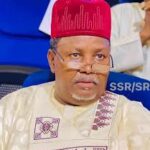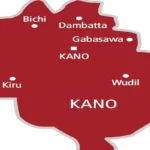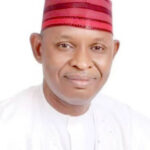Former Vice-President Yemi Osinbajo, SAN, has given four conditions to be worked upon to realise climate-positive growth and create a green industrial region of the world, the first being for African countries to focus their economic growth and development plans on green opportunities.
He said in a broader view, out of the four necessary things to adopt, two are what the African countries can and should work on and the other two require global partnership and engagement.
Prof. Yemi Osinbajo, who is the global advisor of the Global Energy Alliance for People and Planet (GEAPP), an international organisation committed to supporting the global community to meet critical climate goals during the next decade, gave the highlights while delivering his address titled “Climate Positive Growth: Africa As A Climate Action Partner For The UAE And The World,” at New York University (NYU) Abu Dhabi Campus, UAE, on Tuesday, December 5, 2023.
Given his views, Osinbajo said that “Africa is home to 60% of the world’s best solar resources, and, in addition, has abundant wind, geothermal, and hydro potential. Its untapped renewable energy potential is 50 times the anticipated global demand for electricity in 2040.
“Also, Africa has the youngest and fastest growing workforce on the planet and with its massive natural resources, including arable land and critical mineral assets, it can develop the first green industrial civilization, greening global manufacturing and supply chains and removing carbon from the air.”
“In other words, Africa is perhaps the only region today, ironically on account of its low development base that can truly achieve green growth, and economic growth without growing emissions, or even keeping emissions constant, but actively addressing the reduction of emissions and the concentration of greenhouse gases in the atmosphere,” Osinbajo said.
He added that what it means for the continent is that, “If Africa processed the bauxite it mines which is 25% of global bauxite production, to aluminum with renewable energy before exporting it, we could save 335 million tonnes of CO2e per year (1% of global emissions), create 280,000 jobs, generate $ 37billion of additional revenue for the continent.
“In fact, by aggressively deploying its renewable energy resources, Africa can provide energy to all Africans, 600 million of whom currently do not have access to energy and 150 million of whom have unreliable access to energy, at a 30% lower cost and with over 90% lower emissions per KWH, compared to the current stated policy.”
“Africa’s renewable energy is not only abundant but also has very low seasonality, or intermittency which makes it possible to reliably provide renewable baseload, to power continuous industrial production. Strikingly, the lowest-cost set-up of solar, wind, and battery storage to get reliable baseload to power industry, is twice as expensive in Germany as it is in Nigeria,” the former VP said.
As a result, Osinbajo contended that these are what made the four areas of focus for development important, saying, “One, African countries need to focus their economic growth and development plans on these green opportunities. Interestingly, several African countries are beginning to do so, especially after some of the developments culminating in the Africa Climate Summit in Nairobi, Kenya last September where the African Union adopted the paradigm of Climate Positive Growth. Two, they need to structure their policy and regulations in ways that support this green industrialization.”
He said, “We then need two pieces of global collaboration; first, fair and equitable market access to meet global demand for green products, services and carbon credits. For example, as the EU builds out its Carbon Border Adjustment Mechanism (CBAM) and other regions look at similar measures; this needs to be designed in a way that does not exclude the locations most suitable to rapidly and affordably decarbonising global production.”
This according to the GEAPP global advisor, “Includes not only demand for industrial products but also for carbon credits,” noting that “Emerging economies, and in particular African countries have a disproportionally low market share and attract some of the lowest prices.”
Though he admitted that, “carbon markets are far from perfect. These days, not a week goes by without an exposé about bad carbon credits, often African.” But as these issues exist in the market, he said, “It is important not to lose sight of one of the core drivers, and that is the current price coming out of Africa.”
“At the current price of 50 cents to a few dollars per tonne in the voluntary carbon market,” Osinbajo said, “It is simply impossible to generate quality credits,” as he informed that, “Price needs to cover the costs of developing a project, generating and trading the credit, conducting proper monitoring and evaluation, paying taxes and generating viable returns for all stakeholders involved, from local communities to project developers to the providers of risk capital.”
“The second condition to make Climate Positive Growth a reality for which we need global collaboration is the right type and amount of investments and capital. The UAE has shown far-sightedness in its investment commitments to the development of renewable energy in Africa.
“At the Africa Climate Summit, the UAE gave a ‘non-binding letter of intent’ for $4.5 billion towards clean energy and $450 million for carbon credits. Masdar, the UAE’s clean energy champion has announced a partnership with Africa50, the pan- African infrastructure investment platform to identify, fast-track and scale clean energy projects across the continent,” Osinbajo said.
On financing, he said, “On accessing the right quantum of capital, the cost of capital in Africa is high. African governments pay 5 times as much interest in the bond market as they would if the Multilateral Development Banks were properly capitalised. The cost of borrowing for African countries is probably the highest of any region. Those seeking investments for private projects face high costs of capital and unhelpfully short tenures, driven by both real and perceived risk factors.
“Addressing this requires a whole range of interventions. I will structure it into four important categories, which all need to be delivered upon.
The first category, according to him, is “Keeping past promises, including the operationalisation of the Loss and Damage Fund agreed last year at COP27 and the commitment to $100 billion a year in climate finance for developing countries.
“The second category is the reform of the International Financial Architecture. These have been identified in the Bridgetown Initiative and the Capital Adequacy Framework, amongst others. This includes a wide range of tools that increase and strengthen the balance sheets of Multilateral Development Banks, ensure more of their deployment goes to emerging and frontier economies, and drive more deployment towards climate-aligned investments.”

 Join Daily Trust WhatsApp Community For Quick Access To News and Happenings Around You.
Join Daily Trust WhatsApp Community For Quick Access To News and Happenings Around You.


